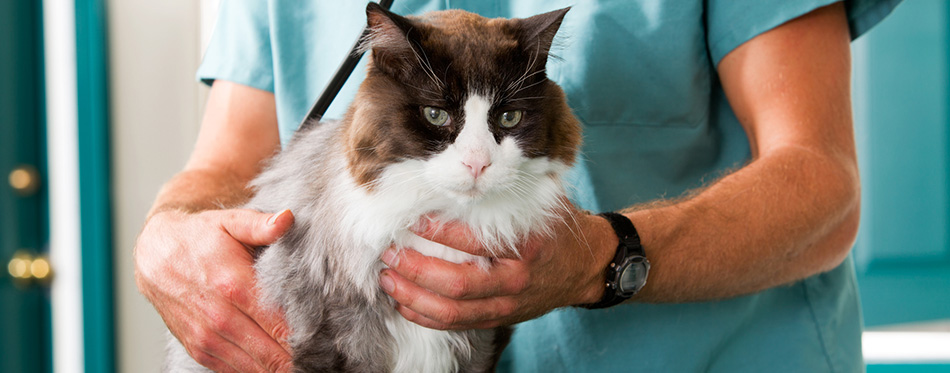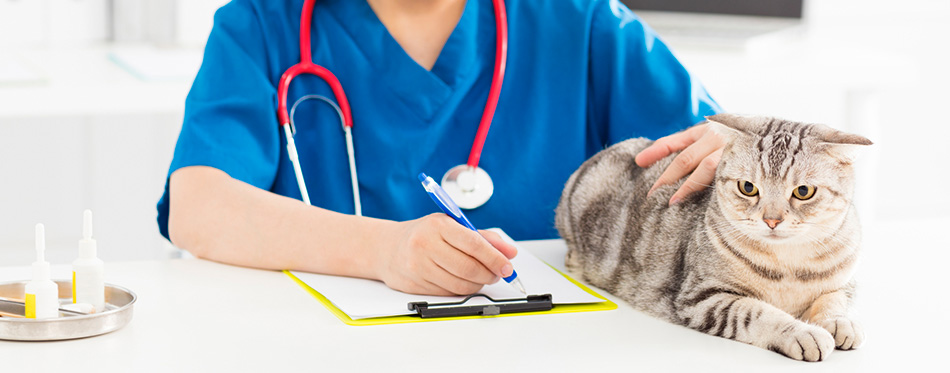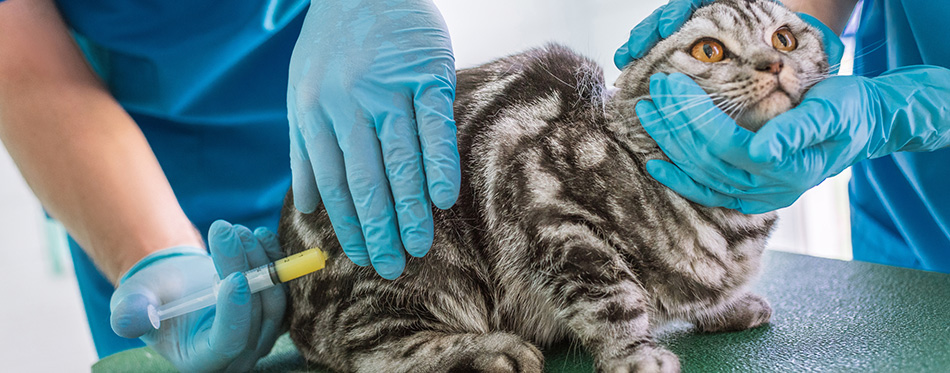A big part of being a cat Mom or Dad is looking after your pet’s health. Sadly, there are several diseases and infections that can make cats very ill indeed and some are even fatal. One of the most effective ways of preventing your kitty from suffering from one of these nasty illnesses is cat vaccination.
Cat vaccinations have been around for half a century and in that time they have saved the lives of thousands of cats. There are also added benefits. When you take your cat to the vet for their regular vaccination appointment, it is an excellent opportunity for them to have a quick check over and for you to raise any concerns that you may have.
However, there is a lot of confusion and false information about cat vaccinations. If you are not sure how to proceed, you should always have a discussion with your vet. Here is some basic information to get you started so that you can be informed when making decisions about vaccinating your kitty.

What Exactly is a Vaccine?
Vaccinations are a small quantity of fluid that is injected just under the skin of your cat using a fine needle. Occasionally, they can be given as drops into their eyes or up their nose. The idea behind vaccination is that it stimulates the body’s own immune system to respond by producing antibodies which fight the disease. Therefore, they protect against specific diseases in the future because the body will already have the antibodies ready. Each vaccine is for a specific disease and triggers one type of response but several vaccinations can be given in the same injection.
Vaccinations can be any of the following:
- Modified live vaccines. These contain a live pathogen (an organism that causes a disease) that has been damaged in some way so that it is no longer capable of causing disease. It can, however, trigger an immune response.
- Killed or inactivated vaccines. These contain a dead pathogen and is therefore not as effective at triggering the immune system so it may have to be combined with other agents to work properly.
- Recombinant vaccines. The genes from one pathogen are incorporated into another organism and this is injected into the body. This is the most modern type of vaccination and gives a strong immunological response.
Cat vaccinations administered by your vet have undergone years of research and testing to make sure that they are as safe as possible. This is not true for the ‘homeopathic vaccines’ that you may read about or buy yourself. The effectiveness and safety of these have not been tested.
Which Vaccines Should My Cat Have?
There are several different factors that will dictate which vaccines would be most suitable for your cat. These include their age, breed, contact with other cats, lifestyle and where you live as well as which diseases are currently prevalent in the cat population. Not all cat vaccines are available or licensed for feline use in the US. Cats that lead an indoor lifestyle face different risks to those that explore outdoors.
What Vaccines do Indoor Cats Need?
Vaccines are usually divided into core vaccines and non-core vaccines. The so-called core vaccines are those that are considered vital for all cats and that includes cats that do not go outdoors. This is because they guard against the most widespread diseases or those that are the most severe.
The non-core vaccines are only given to cats who face a realistic chance of being exposed to those diseases and your vet will help you make this assessment.
Core Vaccines for Cats
These are the most common core vaccines that vets in the US usually recommend for most cats.
- Feline panleukopenia: You may see this written as FPV, feline infectious enteritis or feline parvovirus. It is a virus that causes a very nasty and often fatal form of hemorrhagic gastroenteritis. It occurs as outbreaks and sadly many of the cats that get it will die. The vaccination is highly effective and plays an important role in controlling this feline disease. The virus is capable of surviving for some time in the environment so vaccination is the only realistic way of protecting your cat.
- Feline herpes virus and feline calicivirus: Your cat will receive a combined vaccination for these two diseases. They are the two most common causes of cat upper respiratory tract infection which is also called cat flu. The symptoms are sneezing, a discharge from the nose and eyes, conjunctivitis and mouth ulcers. It can be a mild disease but it can also be very severe and complications such as viral pneumonia are common. The virus can survive in the environment but it is usually transmitted through close contact between cats such as sneezing. Both viruses are widespread in cat populations in the US. Whilst vaccination does not guarantee protection, it does reduce the chances of infection and makes the disease less severe if your cat does get it.

Non-core Vaccines for Cats
The ‘non-core’ vaccinations will be given to your cat if your vet feels that they are at risk.
- Feline leukemia virus (FeLV): FeLV is often passed from one cat to another through fighting or by grooming each other. It can also be spread by sharing food and water bowls and litter trays. Kittens can also be born with FeLV because they get it from their mothers before they are born. This virus can cause a wide range of symptoms including suppression of the immune system which makes your cat susceptible to other infections. It can also cause anemia and lymphoma and sadly many cats do not survive. The disease is diagnosed by a blood test and infected cats should be isolated to prevent them from passing on the infection. The cats that would most benefit from the FeLV vaccine are those that spend a lot of time outside mixing with unknown cats. If this sounds like your kitty, it would be a very good idea to get them vaccinated. Also, it is often sensible to get kittens vaccinated because they are the most susceptible to this disease and it could cause problems for the rest of their lives.
- Chlamydophila felis: Chlamydophila felis is a bacteria that can cause a nasty eye infection (conjunctivitis) and possibly some upper respiratory symptoms as well. Vaccination would be especially useful for young kittens who live in households where there are a lot of cats. If you are a cat breeder, this is a vaccination that you may want to consider. Although it can be treated with antibiotics, prevention is often preferable to treatment.
- Bordetella bronchiseptica: Bordetella bronchiseptica is a bacteria. It causes symptoms in the upper respiratory tract of cats and this is often called cat flu. It is not as common as the FHV-1 and FCV pathogens that also cause cat flu and that all cats should be vaccinated against. However, it can make cats very ill and is a particular problem in stressed cats and those that live with a lot of other cats. The bacterium can cause pneumonia in young kittens too. This is a disease that can be effectively treated with antibiotics so most cats will not require vaccination. However, vaccination has proved to be an effective way of controlling the spread of the disease in cat colonies.
- Feline immunodeficiency virus: Feline immunodeficiency virus (FIV) vaccination is not available in all areas so it is something that you will need to check with your vet. It is a common virus but is seen most often in cats that go outdoors and get involved in fights with other cats because it is spread through cat bites. There are several different strains of this virus. The vaccine may not offer complete protection from all of the strains but it still gives vulnerable cats valuable protection. Once your cat has the vaccine, they will test positive in tests used to detect FIV infections so this diagnostic test cannot be used for them. However, it is hoped that there are new diagnostic assays that will be available soon that will not have this problem.
- Rabies: Rabies is a very serious disease. Cat rabies is not as common as dog rabies and dogs are more likely to give it to humans. However, it is still an important disease and if rabies is present in a region, cats should be vaccinated.
Other Vaccines for Cats
There are a few other cat vaccines but they are not available in all countries and you may not be able to access them in the US. Some examples are Feline infectious peritonitis, Microsporum canis and Giardia lamblia. The effectiveness is sometimes open to question and there may be risks involved as well. They are certainly not considered to be core feline vaccines in the US.
How Often Should a Cat be Vaccinated?
Vaccinations should start when your cat is a kitten. They should receive their core vaccinations plus any other non-core vaccinations that your vet has recommended at around eight or nine weeks old. Then they should have a second injection around three or four weeks later. It is likely that there will be a third vaccination for FPV when they are 16-20 weeks old to make sure that they are fully protected.
A booster vaccination is needed a year later to give the best levels of protection. Then further boosters will be needed either every year or less frequently depending on the particular vaccine and the level of exposure that is likely. Boarding catteries may ask for proof of annual booster vaccinations.

Can Vaccines Cause any Problems for My Cat?
Cat vaccinations side effects are something that owners can get very concerned about. However, the research data shows that adverse reactions to vaccines are very rare. You need to bear in mind that millions of vaccinations are administered to cats every year. Vaccination is considered safe enough for humans and is therefore also safe for our feline friends.
If your kitty does experience a reaction, it is likely to be very mild. They may appear a little lethargic and they may go off their food for a day or so. The area around where they received the injection may be a bit tender but this should not last very long. More serious potential side effects are even more rare but can include vomiting and diarrhea, fever, difficulty walking, respiratory problems and a lump at the injection site.
There has been a lot of concern about a special type of cancerous growth called fibrosarcoma and its connection with vaccinations. Research has shown that this type of malignant tumor can develop at the part of the body where your cat as injected. It is very rare for this to happen and the tumor develops in fewer than one in 20,000 injection sites. Nevertheless, it would be sensible to keep a close eye on the area of your cat’s body once they have been vaccinated. If there is a swelling that persists for several weeks, get your vet to check it out.
Some vets prefer to administer the vaccines in the limbs rather than in the neck region. This is because it makes it easier to surgically remove a fibrosarcoma from these sites should one develop.
The Final Word on Cat Vaccines
Overall, cat vaccination is a safe procedure which protects your kitty from several nasty and life-threatening diseases. As with any medical procedure, there are some risks but for the majority of cats these are outweighed by the benefits. Cat vaccinations cost will also have to be taken into account but this is something that you should consider before you take on a cat in the first place.
Every cat is different so it is important that you have a chat with your vet to evaluate which vaccines should be given to your cat and how often they should be given.
Sources:
- Feline Vaccines: Benefits and Risks – Cornell Feline Health Center
- Vaccinating your cat – international cat care
- Vaccinating cats and kittens – RSPCA

